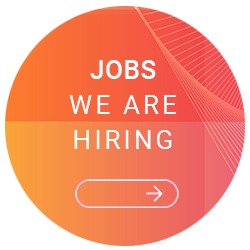Last Updated on 9. September 2025
Digital transformation, changing customer needs, demographic change and a shortage of skilled workers – for many medium-sized companies, these developments are no longer a distant prospect, but already a reality. This is particularly noticeable in the area of leadership: managers in medium-sized companies today face the challenging task of providing security on the one hand, while enabling innovation and change on the other.
This is a balancing act that has special conditions in SMEs.
This is because SMEs are often closer to the business, have flatter hierarchies and faster decision-making processes – but also fewer resources for systematic management development or change projects. In this article, we highlight typical areas of tension, key concepts and concrete solutions based on our experience in advising SMEs.
New demands on leadership in the SME context
SMEs are traditionally characterised by pragmatic, often highly personal leadership. Owners, managing directors or long-standing division managers shape the culture – often strongly through proximity, a hands-on mentality and personal responsibility.
But it is precisely in times of transformation that it becomes clear that this type of leadership is increasingly reaching its limits. Why?
- Complexity and change are increasing – decisions can no longer be made ‘on gut instinct’.
- Teams are becoming more diverse and dispersed – due to hybrid working, new generations and international collaboration.
- Employees expect more say and a sense of purpose – especially skilled workers in sought-after fields.
Leadership in medium-sized companies must therefore be professionalised – without losing its particular strengths (proximity, pragmatism, short communication channels).
We recommend: Understanding leadership as a separate field of activity and developing it in a targeted manner. For example, through leadership models, joint development formats or sparring for the management.
The tension between top-down and self-organisation
SMEs are often still strongly organised in a top-down manner – which is efficient in many cases. However, with growing complexity and new requirements, centralised control approaches are reaching their limits. At the same time, ‘agile self-organisation’ is not a panacea.
What we see in our practice:
- Managers are reluctant to relinquish responsibility – often out of concern for quality, but also due to a lack of clarity in roles and processes.
- Teams want more decision-making freedom – but encounter unclear framework conditions or reluctant leadership.
This leads to a typical paradox: self-organisation should emerge – but not ‘too much’ or ‘too quickly’.
Our recommendation for medium-sized companies:
- Define clear leadership and decision-making principles
- Transfer responsibility step by step, with clear rules
- Empower teams to take responsibility – through coaching, methods and trust
- Support managers in actively shaping their own role change
We often provide support through governance designs, pilot projects in teams or leadership dialogues that highlight the tension between control and autonomy and help to shape it.
Adaptive leadership & ambidexterity in medium-sized companies
Two concepts that are particularly helpful for SME leadership:
Adaptive leadership
Leadership in uncertain times requires not only answers, but also the ability to lead with questions, tensions and ambiguity. Adaptive leadership means:
- Not trying to solve all problems “technically”
- Instead: actively involving employees, allowing perspectives
- Enabling learning and change in the organisation
Especially in medium-sized businesses, where leadership is often associated with strong decision-making authority, it takes courage to consciously share responsibility and allow for reflection. We often accompany this change with targeted sparring, development programmes or change labs.
Ambidexterity
Particularly challenging for medium-sized companies: How can we operate existing business models in a stable manner – and at the same time break new ground, for example in the direction of digitalisation, platform business or international growth?
Ambidexterity helps to systematically integrate both modes – stability and innovation –
- through separate but connected structures
- through leadership roles that mediate between the existing and the new
- through targeted projects in which new things can be experimented with
Our consulting practice shows that medium-sized companies can be particularly successful in practising ambidexterity if they consciously create roles and spaces for it.
Recommendations for leadership development in medium-sized companies
Many medium-sized companies have so far invested little systematically in leadership development. But especially in times of transformation, this is a key task for the future – for culture, strategy and attractiveness as an employer.
1. Professionalise leadership – without bureaucracy
A shared understanding of leadership (mission statement, principles) provides orientation – without rigid structures. Small impulses often have a big impact.
2. Enable learning in everyday life
Managers in SMEs are heavily involved – traditional training formats are often not suitable. Better: short formats, peer learning, accompanied practical reflection.
3. Develop management and executives together
In SMEs in particular, management is often a role model and source of inspiration. Therefore: do not delegate leadership ‘downwards’, but help shape it together.
4. Link leadership with strategy
Leadership development should be closely linked to strategic challenges – e.g. digitalisation, growth or succession.
How we strengthen SME leadership at mgm consulting partners
We support SMEs in systematically shaping leadership – with a pragmatic, business-oriented approach:
✅ Organisational development & leadership architecture
We work with you to develop structures, roles and control models that make leadership effective – e.g. in growing companies or in succession planning.
✅ Leadership dialogues & development journeys
We design tailor-made formats – from executive circles to strategy retreats – for managing directors, division managers or junior executives.
✅ Change and transformation support
Whether new business models, agile projects or cultural change: we support executives in shaping and implementing these changes.
✅ Reflection and sparring formats
As neutral sparring partners, we offer managers space for reflection – individually, in teams or in formats such as ‘leadership sprints’.
Conclusion: Future-proof leadership requires clarity and movement
Transformation is often particularly evident in medium-sized companies – because many things are more personal, direct and immediate. That is precisely why good leadership is so crucial here.
Managers in medium-sized companies need guidance, exchange – and the courage to develop themselves. We accompany them on this journey: systematically, practically and on an equal footing.
Because leadership in times of transformation does not mean having all the answers – it means creating the space in which new things can emerge.







